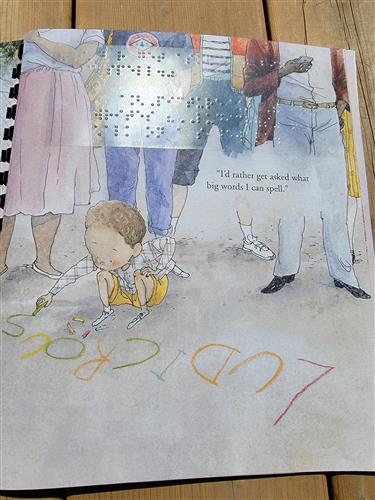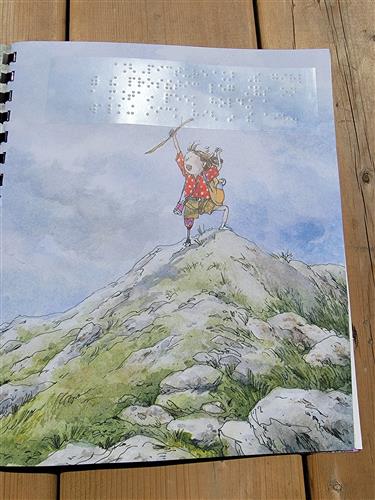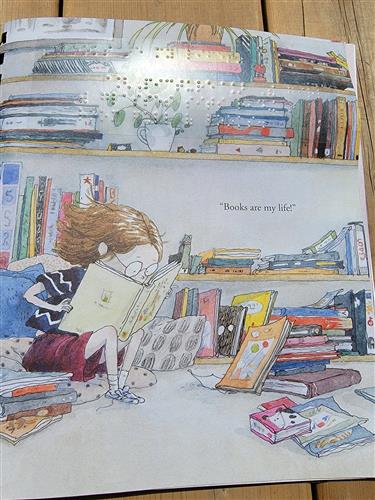In this companion to the enormously popular A Family Is a Family Is a Family, a group of kids share the silly questions they always hear, as well as the questions they would rather be asked about themselves.
Being the new kid is hard, a child in the school playground tells us. I can think of better things to ask than if I’m a boy or a girl. Another child comes along and says she gets asked why she always has her nose in a book. Someone else gets asked where they come from.
One after another, children share the questions they’re tired of being asked again and again — as opposed to what they believe are the most important or interesting things about themselves. As they move around the playground, picking up new friends along the way, there is a feeling of understanding and acceptance among them. And in the end, the new kid comes up with the question they would definitely all like to hear: “Hey kid, want to play?”
Sara O’Leary’s thoughtful text and Qin Leng’s expressive illustrations tell a story about children who are all different, all themselves, all just kids.
Key Text Features
dialogue
Correlates to the Common Core State Standards in English Language Arts:
CCSS.ELA-LITERACY.RL.1.6
Identify who is telling the story at various points in a text.
CCSS.ELA-LITERACY.RL.1.7
Use illustrations and details in a story to describe its characters, setting, or events.
CCSS.ELA-LITERACY.RL.2.1
Ask and answer such questions as who, what, where, when, why, and how to demonstrate understanding of key details in a text.
CCSS.ELA-LITERACY.RL.2.6
Acknowledge differences in the points of view of characters, including by speaking in a different voice for each character when reading dialogue aloud.
CCSS.ELA-LITERACY.RL.2.7
Use information gained from the illustrations and words in a print or digital text to demonstrate understanding of its characters, setting, or plot.
CCSS.ELA-LITERACY.RL.3.1
Ask and answer questions to demonstrate understanding of a text, referring explicitly to the text as the basis for the answers.
CCSS.ELA-LITERACY.RL.3.7
Explain how specific aspects of a text's illustrations contribute to what is conveyed by the words in a story (e.g., create mood, emphasize aspects of a character or setting)
In this companion to the enormously popular A Family Is a Family Is a Family, a group of kids share the silly questions they always hear, as well as the questions they would rather be asked about themselves.
Being the new kid is hard, a child in the school playground tells us. I can think of better things to ask than if I’m a boy or a girl. Another child comes along and says she gets asked why she always has her nose in a book. Someone else gets asked where they come from.
One after another, children share the questions they’re tired of being asked again and again — as opposed to what they believe are the most important or interesting things about themselves. As they move around the playground, picking up new friends along the way, there is a feeling of understanding and acceptance among them. And in the end, the new kid comes up with the question they would definitely all like to hear: “Hey kid, want to play?”
Sara O’Leary’s thoughtful text and Qin Leng’s expressive illustrations tell a story about children who are all different, all themselves, all just kids.
Key Text Features
dialogue
Correlates to the Common Core State Standards in English Language Arts:
CCSS.ELA-LITERACY.RL.1.6
Identify who is telling the story at various points in a text.
CCSS.ELA-LITERACY.RL.1.7
Use illustrations and details in a story to describe its characters, setting, or events.
CCSS.ELA-LITERACY.RL.2.1
Ask and answer such questions as who, what, where, when, why, and how to demonstrate understanding of key details in a text.
CCSS.ELA-LITERACY.RL.2.6
Acknowledge differences in the points of view of characters, including by speaking in a different voice for each character when reading dialogue aloud.
CCSS.ELA-LITERACY.RL.2.7
Use information gained from the illustrations and words in a print or digital text to demonstrate understanding of its characters, setting, or plot.
CCSS.ELA-LITERACY.RL.3.1
Ask and answer questions to demonstrate understanding of a text, referring explicitly to the text as the basis for the answers.
CCSS.ELA-LITERACY.RL.3.7
Explain how specific aspects of a text's illustrations contribute to what is conveyed by the words in a story (e.g., create mood, emphasize aspects of a character or setting)
| Published By | Groundwood Books Ltd — Aug 1, 2021 |
| Specifications | 32 pages | 8.5 in x 10 in |
| Keywords | understanding differences; diversity; acceptance; self awareness; being the new kid; gender identity; disability and special needs; multiculturalism; new friends; child's perspective; respect for others; inclusive; growing confidence; pride; tolerance; convey meaning through illustration; child as narrator; braille; |
|
Supporting Resources
(select item to download) |
Teacher's Guide |
| Written By |
SARA O'LEARY is a writer of fiction for both adults and children. Her highly acclaimed picture books include Percy’s Museum, illustrated by Carmen Mok; Night Walk, illustrated by Ellie Arscott; A Family Is a Family Is a Family, illustrated by Qin Leng (USBBY Outstanding International Books); and Maud and Grand-Maud, illustrated by Kenard Pak. She has also written This Is Sadie (adapted for the stage for New York City Children’s Theater) and the award-winning series of Henry books, all illustrated by Julie Morstad. Sara writes for children’s animation and teaches at Concordia University in Montreal. |
| Illustrated by |
QIN LENG lives and works as a designer and illustrator in Toronto. She graduated from the Mel Hoppenheim School of Cinema and has received many awards for her animated short films and artwork. Her picture books include Hana Hashimoto, Sixth Violin by Chieri Uegaki (APALA Award, Governor General’s Literary Award finalist); Away by Emil Sher and A Family Is a Family Is a Family by Sara O’Leary (both USBBY Outstanding International Books); When I Found Grandma by Saumiya Balasubramaniam (Marilyn Baillie Picture Book Award finalist) and I Am Small, which Qin has written and illustrated. |
| Written By |
|
SARA O'LEARY is a writer of fiction for both adults and children. Her highly acclaimed picture books include Percy’s Museum, illustrated by Carmen Mok; Night Walk, illustrated by Ellie Arscott; A Family Is a Family Is a Family, illustrated by Qin Leng (USBBY Outstanding International Books); and Maud and Grand-Maud, illustrated by Kenard Pak. She has also written This Is Sadie (adapted for the stage for New York City Children’s Theater) and the award-winning series of Henry books, all illustrated by Julie Morstad. Sara writes for children’s animation and teaches at Concordia University in Montreal. |
| Illustrated by |
|
QIN LENG lives and works as a designer and illustrator in Toronto. She graduated from the Mel Hoppenheim School of Cinema and has received many awards for her animated short films and artwork. Her picture books include Hana Hashimoto, Sixth Violin by Chieri Uegaki (APALA Award, Governor General’s Literary Award finalist); Away by Emil Sher and A Family Is a Family Is a Family by Sara O’Leary (both USBBY Outstanding International Books); When I Found Grandma by Saumiya Balasubramaniam (Marilyn Baillie Picture Book Award finalist) and I Am Small, which Qin has written and illustrated. |
| Audience | ages 3 to 6 / grades P to 1 |
| Key Text Features | dialogue |
| Common Core |
CCSS.ELA-LITERACY.RL.2.1
CCSS.ELA-LITERACY.RL.3.1 CCSS.ELA-LITERACY.RL.3.7 CCSS.ELA-LITERACY.RL.1.6 CCSS.ELA-LITERACY.RL.2.6 CCSS.ELA-LITERACY.RL.1.7 CCSS.ELA-LITERACY.RL.2.7 |
“[N]ot only a fantastic companion to its highly acclaimed predecessor but also a stand-alone book that reminds us kids have more to share, if only we asked better questions.” —Quill & Quire, starred review
“[A] celebration of diversity and inclusion … The joyful pictures and intriguing questions will certainly inspire spirited discussion.” —Booklist
“A wonderful book about diversity, acceptance, and friendship.” —Calgary Herald




